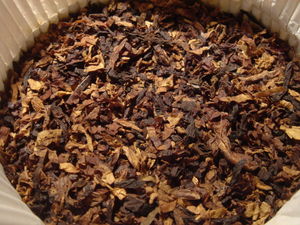Ephemera. Most people don’t know what I am talking about when I use the word. But it’s really a much simpler word than it seems.
Chances are you already own some ephemera. If you have saved tickets from rock concerts and baseball games, then you own ephemera. If you still have your grade school report cards, then you own ephemera. If your mother didn’t throw out your baseball card collection, then you own ephemera.
Ephemera is the plural of ephemeron and refers to items designed to be useful or important for only a short time.1 Originally, the word referred to a fever that lasted only one day and was then extended to insects and plants that lasted only one day.2 For the purposes of this article, ephemera refers to paper items meant to last only a short period of time. These include advertisements, baseball cards, bookmarks, broadsides, concert tickets, greeting cards, magazines, maps, newspapers, photographs, postcards, sheet music, trade catalogs, etc.
What if you want to be more than an accidental ephemera collector? How do you go about it? Where do you find old paper items? What are they worth?
When starting out as an ephemera collector, it is best to proceed with caution, as it is whenever you are a novice collector of anything. I entered the world of ephemera, through the back door. When you buy and sell books for a living as I do, it is hard not to notice antiquarian paper items.
I began by saving everything I found in books. I found vintage bookmarks, the occasional baseball card, letters, postcards and other items. People grab anything to use as a bookmark. While many of the items I found were worthless, some were valuable. I once found a nice pamphlet put out by the Freedman’s Bureau, a department of the United States government set up to help the slaves right after they were freed. By the way, items found in books are called flyaways.
When I went to houses to purchase book collections, sometimes people would offer me old magazines, newspapers and other paper items. At first I ignored them because I wasn’t that interested and didn’t appreciate them. Once I realized the importance of ephemera as raw historical material, I changed my mind. Not knowing the monetary value of ephemera, I offered low bids at first, which were almost always accepted.
As I became more comfortable buying and selling ephemera, I began paying more for it, and even buying single pieces from dealers and from online auction sites like ebay, which is a good source for old paper items. I have also found good ephemera at garage sales, but more particularly at estate sales. At one estate sale of a prominent local person, I purchased a large quantity of diaries (which are not considered ephemera) and paper items relating to the owner of the house and her ancestors going back several generations. These included letters, playbills, surgical records, newspapers, photographs, diplomas, tintypes and more.
When a local antique dealer died, I went to his estate sale and bought lots of old paper items which were priced at $15-$20 a box. Some of the material in each box was damaged so badly it was useless. But each box contained a wide variety of interesting, collectible and saleable ephemera.
Finding out what ephemera is worth can be difficult. If you are a book collector, you only have to go to www.bookfinder.com and current prices are readily available for the vast majority of books. I have not been able to find a similar website for ephemera. However, price guides have been published for specific categories of ephemera. For example, Marie-Reine Pafik and Anna Marie Guiheen Pafand have published The Sheet Music Reference and Price Guide. Many similar price guides are available for specific categories of ephemera.
Auction records, including those on ebay, can also give you some idea of what a piece of ephemera is worth. While I do find auction records and price guides important, they have to be used carefully. Price guides that give a dealer’s asking price are not as valuable as those that list the actual selling price.
Even those guides that give prices realized still must be used with caution. Prices can vary from one region of the country to another and from year to year. When the movie Titanic came out, prices for Titanic ephemera went through the roof. A year later, they dropped considerably.
The Encyclopedia of Ephemera: A Guide to the Fragmentary Documents of Everyday Life for the Collector, Curator and Historian by Mauric Rickards as well as his earlier book Collecting Printed Ephemera are basic tools for any ephemera collector, even though they don’t contain price guides.
Collecting ephemera can be fun, but be careful it can also be addicting. I have a friend who has amassed a huge credit card debt due to his addiction to collecting ephemera.
If you decide to collect ephemera, make sure you collect responsibly.
Endnotes
1. ephemera. Dictionary.com. Dictionary.com Unabridged (v 1.1). Random House, Inc. http://dictionary.reference.com/browse/ephemera (accessed: April 17, 2008).
2. ephemera. Dictionary.com. Online Etymology Dictionary. Douglas Harper, Historian. http://dictionary.reference.com/browse/ephemera (accessed: April 17, 2008).




